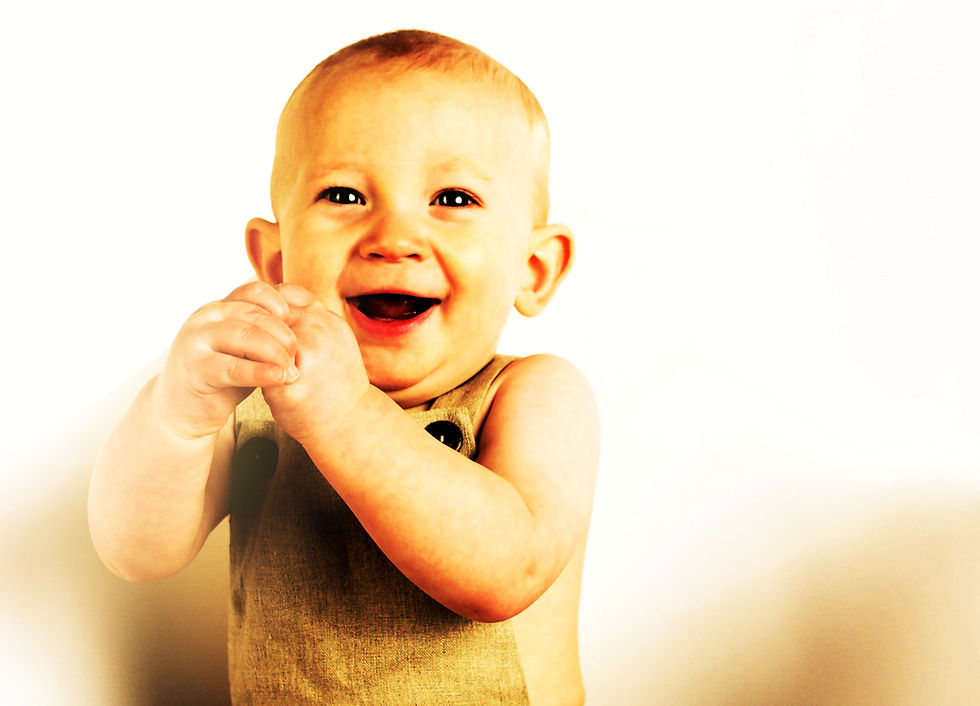A Parent's Guide to Speech, Hearing, and Language Development
- Sarah Roshto, MOT LOTR
- May 1, 2019
- 2 min read

May is Better Hearing and Speech Month, so there is no better time to brush up on your developmental milestone knowledge! Remember- early intervention is key! Talk to your pediatrician if your child is not meeting these milestones to determine if a referral to a speech-language pathologist or audiologist might be necessary.
BIRTH TO 3 MONTHS
Reacts to loud sounds
Calms down or smiles when spoken to
Recognizes your voice and calms down if crying
When feeding, starts or stops sucking in response to sound
Coos and makes pleasure sounds
Has a special way of crying for different needs
Smiles when he or she sees you
Enjoys physical contact
Makes eye contact
4 TO 6 MONTHS
Follows sounds with his or her eyes
Responds to changes in the tone of your voice
Notices toys that make sounds
Pays attention to music
Babbles in a speech-like way and uses many different sounds, including sounds that begin with p, b, and m
Laughs
Babbles when excited or unhappy
Makes gurgling sounds when alone or playing with you
Expresses a variety of emotions
Develops strategies to calm self
Explores body parts visually and with touch
Interested in people's faces
7 MONTHS TO 1 YEAR
Turns and looks in the direction of sounds
Listens when spoken to
Understands words for common items such as “cup,” “shoe,” or “juice”
Responds to requests (“Come here”)
Babbles using long and short groups of sounds (“tata, upup, bibibi”)
Babbles to get and keep attention
Communicates using gestures such as waving or holding up arms
Imitates different speech sounds
Has one or two words (“Hi,” “dog,” “Dada,” or “Mama”) by first birthday
Responds appropriately to people's facial expressions
Enjoys playing social games (patty cake, peek-a-boo)
Enjoys watching others and is interested in what others are doing
1 YEAR TO 2 YEARS
Knows a few parts of the body and can point to them when asked
Follows simple commands (“Roll the ball”) and understands simple questions (“Where’s your shoe?”)
Enjoys simple stories, songs, and rhymes
Points to pictures, when named, in books
Acquires new words on a regular basis
Uses some one- or two-word questions (“Where kitty?” or “Go bye-bye?”)
Puts two words together (“More cookie”)
Uses many different consonant sounds at the beginning of words
Clingy to parents/caregivers
Identifies self in mirror
Begins to assert independence or resist adult control
Interacts with other children and expresses interest in what other children are doing
Temper tantrums are typical at this age
Shows preferences for certain toys
Recognizes familiar people vs. strangers
It is important that you support and facilitate these skills by playing with your child on their level- the floor. Take time every day to sing, read, and play toys with your child. Being playful with your child builds a strong foundation for future skill development. Below are some of our therapists' favorite toys for toddlers:
Content retrieved from: https://www.nidcd.nih.gov/health/speech-and-language
